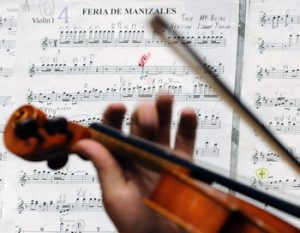relieving muscle
Mozart effect
 Listening to Mozart’s music enhances our brain activity. After listening to Mozart, people responding to the standard IQ test demonstrate an increase in intelligence.
Listening to Mozart’s music enhances our brain activity. After listening to Mozart, people responding to the standard IQ test demonstrate an increase in intelligence.
This phenomenon discovered by some scientists was called the “Mozart effect.” Far-reaching conclusions were immediately drawn from it, especially with regard to the upbringing of children, whose first three years of life were proclaimed decisive for their future intelligence.
This theory received such a strong public response that Mozart’s CDs, with the appropriate recommendations of parents, hit the very beginning of the bestseller lists, and the Governor of the US state of Georgia presented a Mozart CD to each new mother in his staff. Continue reading
Brain “under the jazz”
 When jazz musicians improvise, areas that are responsible for self-censorship and inhibition of nerve impulses are turned off in their brain, and instead, areas that open the way for self-expression are turned on.
When jazz musicians improvise, areas that are responsible for self-censorship and inhibition of nerve impulses are turned off in their brain, and instead, areas that open the way for self-expression are turned on.
A companion study at the Johns Hopkins University, in which volunteer musicians from the Peabody Institute participated, and in which the functional magnetic resonance imaging (fMRI) method was used, shed light on the mechanism of creative improvisation that artists use in everyday life.
Jazz musicians, improvising, create their own unique riffs by turning off braking and turning on creativity.
Scientists from the Medical University, National Institute of Deafness speak about their interest in a possible neurological basis of a state close to the state of trance, into which jazzmen fall, starting spontaneous improvisations. Continue reading
Auditory therapy of A.Tomatis
 About 40 years ago, the French otolaryngologist, Alfred Tomatis, made some amazing discoveries that prompted the development of the Tomatis method. This method has various names: “auditory learning”, “auditory arousal” or “auditory therapy”. Its purpose is to re-educate a person to the hearing process, which improves the ability to learn and learn languages, to communicate, increases creativity and positively influences the social behavior of the individual. Continue reading
About 40 years ago, the French otolaryngologist, Alfred Tomatis, made some amazing discoveries that prompted the development of the Tomatis method. This method has various names: “auditory learning”, “auditory arousal” or “auditory therapy”. Its purpose is to re-educate a person to the hearing process, which improves the ability to learn and learn languages, to communicate, increases creativity and positively influences the social behavior of the individual. Continue reading


